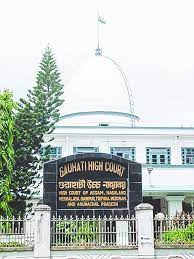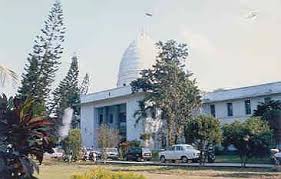By which the writ petition of the first respondent[The original petitioner] was disposed of by declaring that the land in dispute shall continue to be in possession of the original petitioner and would not be treated as surplus land as he is entitled to the benefits of the Urban Land (Ceiling and Regulation) Repeal Act, 1999[The Repeal Act, 1999]. In addition to the above, a direction was issued to the Competent Authority (Urban Ceiling) Saharanpur[The Competent Authority Facts/Pleadings] to ensure that the name of the original petitioner is restored in the revenue records (Para 1)
In the instant case, the original petitioner had knowledge that 5499.20 square meter of his land was declared surplus by order dated 26.11.1977. Yet, this order was challenged through writ petition not before the year 1986. What happened in between is not disclosed. Even if we assume that the third writ petition was based on a separate cause of action, still there could have been a whisper as to what was the reason for such long delay in filing the first writ petition, particularly when the original petitioner was throughout aware of State’s case that possession had been taken in the year 1979 after publication of the vesting notification. The only explanation, if any, for this delay can be found in paragraph 4 of the writ petition, where it is stated that order dated 26.11.1977 was ex-parte. Even if we accept that order dated 26.11.1977 was ex parte, there is no disclosure in the writ petition as to when it came to the knowledge of the original petitioner. (Para 31)
What is even more interesting is that in the third writ petition there is no specific statement that recital in the order, dated 27.03.1987, with regard to taking of possession is incorrect. Though it is stated in paragraph 9 of the writ petition that under orders dated 26.11.1977 and 27.3.1987 possession was never taken. It be noted that possession was not taken under order dated 27.03.1987. Rather, it is alleged to have been taken pursuant to notification dated 15.1.1979. Thus, by the time third writ petition was filed, a vesting notification had already been published in the official gazette on 15.1.1979. Further, the Competent Authority’s order dated 27.03.1987 categorically stated that State has taken possession of the land. Yet, there is no statement in the writ petition that order dated 27.03.1987 bears an incorrect recital with regard to taking of possession. For all the reasons above, in our view, the High Court ought to have been circumspect about the claim of the original petitioner that possession was not taken right up to the enforcement of the Repeal Act, 1999. (Para 32)
As far as documentary material placed by the original petitioner is concerned, we notice that no Khatauni or Khasra extract of the period starting from 1979 up to 1987 was filed. The third writ petition annexes Khatauni or Khasra extracts of the period 1405 to 1417 Fasli, that is of the year 1998 to the year 2010. In addition to those documents, some revenue receipts of the period starting from 1989 have been filed. According to the State, possession of the surplus land was taken in the year 1979. If it were so, even if the petitioner entered into possession anytime thereafter, may be on the strength of the ex parte interim order dated 20.08.1987, the same would not defeat the right of the State in view of decision of this Court in Indore Development Authority (supra) where, in paragraph 258 of the judgment, it was held that once title of the land vests in the State, consequent to acquisition and taking of possession, even if the landholder has retained possession or otherwise trespassed upon it after possession has been taken by the State, he is just a trespasser and his possession, if any, would be on behalf of the owner i.e., the State. (Para 33)
At this stage, we may notice to reject another argument made on behalf of the respondent, which is, that the High Court had granted an interim order, dated 20.08.1987, protecting original petitioner’s possession, therefore, it is to assumed that possession was not taken from him by that time. No doubt, the original petitioner succeeded in obtaining an ex parte interim order but there is no material on record to suggest that this interim order was confirmed after considering State’s objection. Moreover, if possession had been taken prior to the grant of interim order, as is the case of the appellants, and while disposing of the writ petition the question of possession was left open, the interim order would not, in any way, be conclusive to prove continuity of possession. In these circumstances as also that no documentary evidence was filed regarding original petitioner’s possession between the years 1979 and 1987, in our view, the interim order did not carry much evidentiary value to prove that possession was not taken prior to the year 1987. (Para 34)
In view of the discussion above and having regard to the following:
(a) that there was a serious dispute with regard to taking of possession of the surplus land;
(b) that there was a delay of about seven years in filing the first writ petition from the date when possession was allegedly taken by the State, after publication of the vesting notification;
(c) that no documentary evidence such as a Khasra or Khatauni of the period between alleged date of taking possession and filing of the first writ petition was filed by the original petitioner;
(d) that in the earlier two rounds of litigation, the High Court refrained from deciding the issue of possession of the surplus land even though that issue had arisen directly between the parties; and
(e) that infraction of the prescribed statutory procedure for taking possession cannot be the sole basis to discard State’s claim of possession, when it is stated to have been taken long before the date the issue is raised, we are of the considered view that the High Court should have refrained from deciding the issue with regard to taking of actual possession of the surplus land prior to the cut off date specified in the Repeal Act, 1999. Instead, the writ petitioner should have been relegated to a suit. (Para 35)
In view of the above conclusion, the appeal is allowed. The impugned order passed by the High Court is set aside. The first respondent’s writ petition is dismissed without prejudice to his right to institute a suit. (Para 36 )
SUPREME COURT OF INDIA
2023 STPL(Web) 340 SC
[2023 INSC 906]
State Of U.P. & Anr. Vs. Ehsan & Anr.
Civil Appeal No. 5721 of 2023 (Arising Out Of Slp (C) No. 20137 of 2023)-Decided on 13-10-2023
https://stpllaw.in/wp-content/uploads/2023/10/2023-STPLWeb-340-SC.pdf







